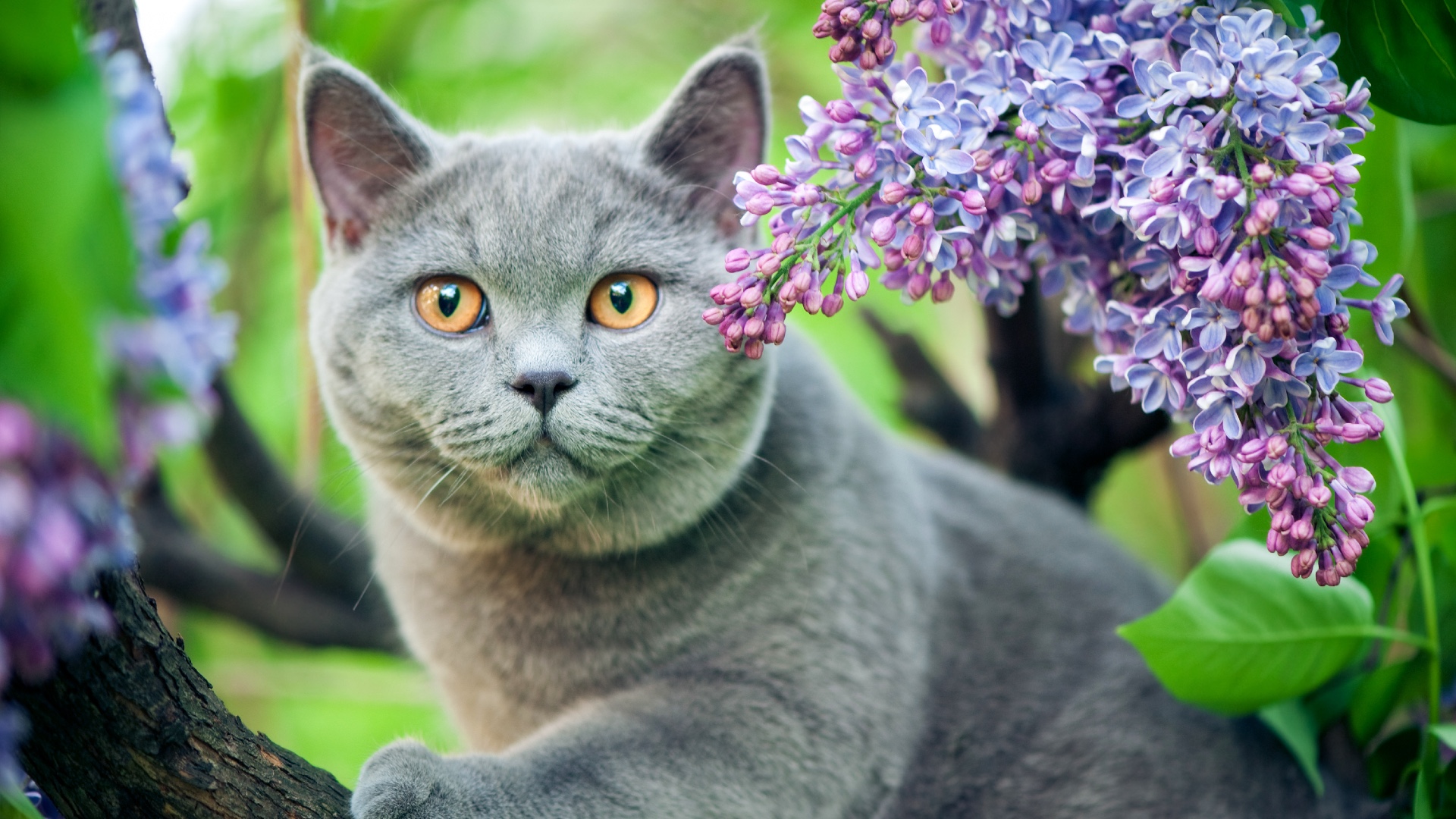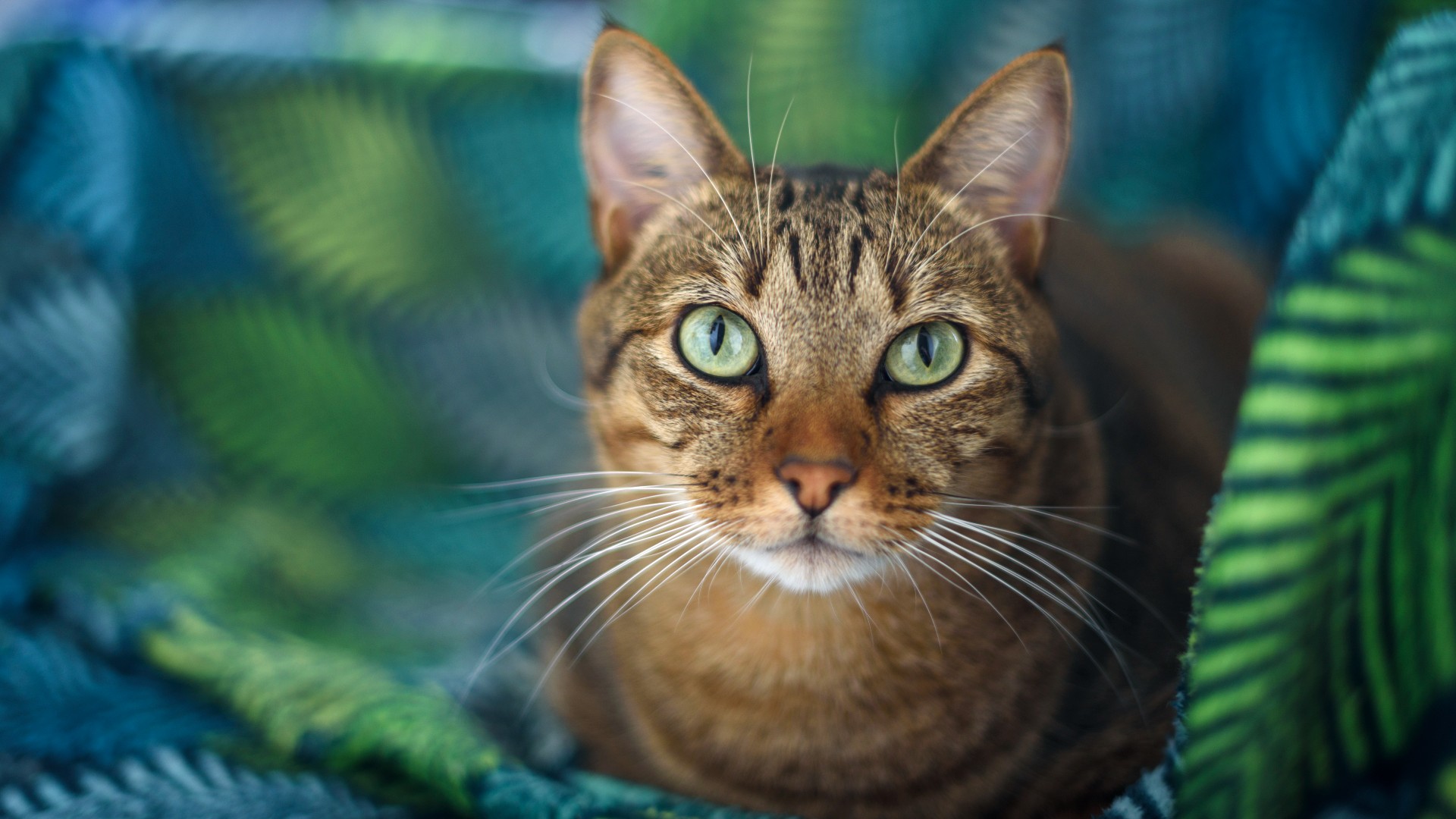Do cats see color?
Do cats see color or are they colorblind? We reveal exactly what your feline friend can see and how you can keep their peepers in tip-top condition

Do cats see color? It's a question you may have found yourself pondering if you have a much-loved moggy in your family. While it has often been said that cats are color blind, nothing could be further from the truth. Although cats may not be able to see the same range of color that we humans can, there's no doubt that their world is far from black and white.
If you've ever wandered out into your backyard or onto your balcony to observe a brilliant sunset or vibrant rainbow, you may have been curious as to what your little feline friend stood beside you could see. The truth is, while they're not seeing the same amount of variety and vividness as you, some of those awe-inspiring colors are still being picked up.
Although cats can see many of the same colors that we can, what's different for them is the spectrum on offer. To help you understand exactly which colors your pet can see and which ones they can't, we walk you through everything you need to know below, including how their vision differs from yours and the best ways to keep their eyes in tip-top shape.
Do cats see color?
Although cats don’t enjoy sunsets and rainbows in quite the same way that we do, our little furry friends can see far more than we think they can, although the spectrum of colors on offer is less than that which is available to humans.
Humans and cats have two types of color receptors in their eyes - cones and rods. The cones are responsible for handling what can be seen during the day and our perception of color, whereas rods cover night vision and our peripheral vision, the ability to see out of the corners of our eyes.
The difference between cats and humans is that humans have three cones, which gives us access to the full spectrum of color, while cats only have two cones, which means they’re more limited in which colors they can and can’t see.
What colors do cats see best?
Because cats have only two color-detecting cones as opposed to our three, they're a little more limited in the colors they're able to detect. Although they predominantly see the world in blues and yellows, your feline friend can also see some green as well as gray, black and white.
Get the best advice, tips and top tech for your beloved Pets
What they can't see, however, is anything on the red-orange spectrum, which is why laser toys for cats with their red beams aren’t generally the best choice of plaything. Even though your moggy will likely happily engage with the toy, they're actually responding to the movement of the light and not the color itself.
So, how do we know for sure that cats can see certain colors? Well, studies have shown that when asked to discriminate between certain colors in order to get a food reward, cats were able to complete the task successfully, indicating that they are indeed able to see a spectrum of color we didn’t previously believe them to be able to see.
How does your cat’s vision differ from your vision?
While cats may be at a disadvantage when it comes to the spectrum of color they can see, it’s not all a win for Team Human on the vision front. Although we possess an extra cone, cats have more rods in their retina, which means they have far superior night vision.
This is enhanced by a structure behind their retina called the tapetum, which acts like a mirror, reflecting light that passes between the rods and the cones, causing their eyes to glow at night and increasing the amount of light they can see.
Cats also have a slightly wider field of vision than humans, at 200 degrees versus our 180 degrees, and they have less sensitivity to brightness because of the structure of their eyes.
Top tips to protect your cat’s vision

Now that you know a little bit more about what colors your cat can see and their vision in general, you may be wondering whether there’s anything you can do as a pet parent to help protect their eyesight and the good news is, you can.
Here are a few ways that you can help to keep your pet’s peepers in tip-top shape:
1. Ensure they eat a balanced diet
One of the best ways to ensure that your furry friend is getting all of the vitamins and minerals they need for their eyes to stay healthy is to feed them a diet made up of the best cat food. When shopping for wet or dry cat food, you want to make sure it includes taurine, a key amino acid that is essential for cats.
Taurine plays a critical role in eye health as it keeps the cones in their eyes healthy, without it, these can start to deteriorate and eventually lead to blindness. Be on the lookout for vitamin A as well, which is vital for vision quality, and Omega-3 fatty acids and antioxidants.
2. Make play a part of their day
One of the most fun ways to help preserve your kitty’s vision is to indulge in lots of play sessions together using a range of the best cat toys. While laser toys aren’t the easiest toys for your cat to use due to their inability to see red, wind up toys or any toy with movement make for a great choice as these will both stimulate and strengthen your feline friend's vision.
3. Get their eyes checked out
Yip, just like us humans, our fur babies can benefit from having an annual eye exam where your vet will be able to check for any early signs of vision loss, alongside other potential eye conditions. This is a great way to catch any issues early on and seek the correct course of treatment.
4. Clean their eyes regularly
Cats are meticulous groomers, but there are always areas on their body that they struggle to keep as clean as they’d like them and the eyes tend to be one of those difficult places.
Most cats will get a small amount of discharge, and like us, this can cause little crusts in the corners of their eyes. You can help them keep on top of this by using a soft washcloth dipped in warm water to gently wipe the area clean, starting from the inside corner of the eye and wiping outward.
5. Monitor your cat's interactions with other pets
A common cause of vision and other eye-related problems in cats is injuries inflicted on them by another pet. All it takes is one swipe to the eye during a game of rough play or a fight and your cat could end up with a serious infection. Make sure you always supervise your kitty if they're playing with another cat and if they do sustain an eye injury, take them to the vet straight away.
6. Trim your cat's eye hair
This won't be necessary if you have a short-haired breed, but if you have a cat with long hair, you'll want to trim their eye hair regularly to avoid debris and bacteria from the hair falling into the eyes and causing an infection. If you're unsure of how to do this or don't feel comfortable doing it for the first time, speak to your vet who will be able to guide you through the process.
7. Cut their nails regularly
Another grooming tip that can help protect your cat's vision is to make sure you cut their nails regularly using a pair of the best cat nail clippers. Keeping your kitty's nails short will reduce the risk of them accidentally scratching themselves in the eye and causing an injury or infection to develop.

Kathryn is a freelance writer who has been a member of the PetsRadar family since it launched in 2020. Highly experienced in her field, she's driven by a desire to provide pet parents with accurate, timely, and informative content that enables them to provide their fur friends with everything they need to thrive.
Kathryn works closely with vets and trainers to ensure all articles offer the most up-to-date information across a range of pet-related fields, from insights into health and behavior issues to tips on products and training.
When she’s not busy crafting the perfect sentence for her features, buying guides and news pieces, she can be found hanging out with her family (which includes one super sassy cat and a kitten), drinking copious amounts of Jasmine tea and reading all the books.
She has written for a range of publications, including Fit&Well, Top Ten Reviews, LiveScience, Goodto, and Product Hunt.
